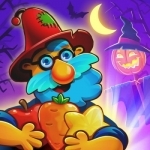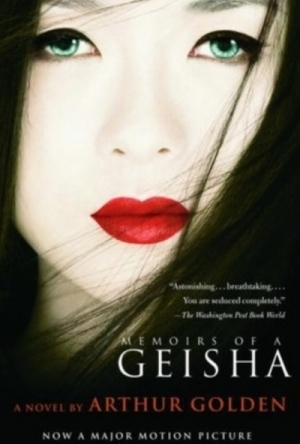
Camping With Grandpa
Education and Games
App
Hey, campers! Who wants to roast a marshmallow and eat a s’more? Grab a stick and join Grandpa on...

Grandma's Kitchen
Education and Games
App
Cook up fun and learning in Grandma's Kitchen! Bake together some compound words, snatch healthy...
Sarah (7800 KP) rated David Attenborough: A Life on Our Planet (2020) in Movies
Oct 14, 2020
In the opening scene of this documentary Attenborough is in Chernobyl, the site of one of the worst man-made disasters in history. His comparison of the impact of the Chernobyl disaster to the impact humanity is having gradually on the environment is not one that many would have even considered, but it’s provides a stark warning. And it continues in this same vein throughout.
Whilst this still features beautifully captured videos of nature and historical footage of Attenborough throughout his career, this documentary has very dark and bleak overtones. Even the statistics on world population, carbon content and decrease in wilderness provided for certain years in Attenborough’s career prove to be crystal clear and unmistakably illustrating just how badly we’ve treated our planet in the space of a mere 90 years. For reference, wilderness in the 1930s was at 66% - in 2020 it has nearly halved to 35%. When you see it there in black and white, it’s terrifying.
Even more terrifying is Attenborough’s glimpse into the future. Showing what will happen to us and our planet in the 2030s to 2100s and beyond, it’s scarier than any horror film you will ever see. And what’s worrying is that the chances of this happening is a lot more likely than anything you see in a scary movie.
Fortunately this does move away from the rather effective warnings and dark tones and goes on to discuss how we can change to prevent this bleak future from coming true. These resolutions – stopping deforestation and overfishing, stabilising the population, more plant based diets – are nothing that we haven’t heard of before. However Attenborough does at least go on to suggest how we as a planet can move towards achieving the above and promote some rather positive success stories where this has already been achieved in a number of places across the globe.
My problem with this documentary is two fold. For one, Attenborough steers clear of the politics and blame game and doesn’t point the finger at any areas of society that may be more at fault than others (i.e. the super wealthy and their excesses). He just seems like he’s being too nice when really he needs to call out the people and areas that hold more responsibility.
My other issue is that he doesn’t relate the solutions to how we can help as individuals. Other than moving to a more plant based diet, the solutions proposed are not things that Joe public can help with and for me personally I found this very frustrating. I want to know what I personally can do to help and sadly I have no control over poaching, deforestation or over-fishing. I barely have any input into my local council’s initiative to build thousands of houses on the greenbelt behind my house, so the issues and solutions discussed here seem rather overwhelming and feel almost impossible to achieve.
However despite this, Attenborough has created a rather bleak and stark documentary that proves to be both depressing and incredibly moving and informative to watch. It will undoubtedly spur many into action and prove to be the warning we as a people need, especially with the final scenes showing how the wilderness has returned to Chernobyl and Attenborough’s reminder that we’re not saving the planet, we’re saving ourselves. I just hope those higher up that have the true power to put the solutions in place have watched this and taken note.

Knot Guide (100+ knots)
Utilities and Sports
App
#1 Knot App on iTunes!!! Now with 103 knots and continuous new additions! An App Store Essentials...

STARRY NIGHT CLOCK
Lifestyle and Photo & Video
App
STARRY NIGHT CLOCK Falling stars in your hands! Shake iPhone, make a wish!! ...

Grandma's Garden
Games and Education
App
Join this charming dancing Grandma and all her silly veggies for fun adventures in the garden! She...

Maps n Trax - Offline Maps, GPS Tracks & Waypoints
Navigation and Productivity
App
MAPS n TRAX is a VERSATILE and HIGHLY CUSTOMIZABLE offline map viewer, GPS track recording and...

Farm Charm
Games and Entertainment
App
Farm Charm is a charming accumulative match-3 puzzler with lots of fascinating levels! Discover...

Avenza Maps
Navigation and Travel
App
Get the App. Get the Map.® - Avenza Maps is a powerful, award-winning offline map viewer with a...
The Bandersnatch (199 KP) rated Memoirs of a Geisha in Books
Nov 7, 2019
My opinion of the book is one of both curiosity and interest. Japan is one of those countries where its history and culture is both unusual and mysterious. The book gives a brief glimpse into the hidden world of the Geisha which are a prominent spot in Japanese culture but are relatively unknown world wide. I believe that the story of Sayuri is one of personal travel and evolution. Since we see Sayuri';s experience as a child before becoming a Geisha, experiencing the horror of war and eventually finding love with the Chairman.
Arthur Golden was born on December 6th 1956 in Chattanooga, Tennessee. When he was eight years old his parents divorced with his father dying five years later. He spent most of his childhood living in lookout mountain, Georgia before graduating from the Baylor school in Chattanooga in 1974. After earning a degree in Fine art (Specifically Japanese art), an M. A. in Japanese history, Golden spent a summer at the Peking University in Beijing and spent some time working in Tokyo. When he returned to the states he earned an M. A. in English at Boston University. Golden married Trudi Legge and they went on to have two children Hays and Tess.
After getting the initial idea for Memoirs of a Geisha Golden spent six years over the story rewriting it at least three times, changing the view point until settling on the viewpoint of Sayuri. Golden had spent time interviewing several Geisha including Mineko Iwasaki (who ended up suing Golden when the Japanese version of the book came out for breach of contract.....the case was settled out of court in 2003) all of whom provided information about the world of the Geisha. After its release Memoirs of a Geisha spent two years on the New York Times bestseller list, its sold more than four million copies in English alone and has been translated into thirty-two languages around the world. In 2005 the book was made into a movie garnering three academy awards.
My opinion of Arthur Golden is very small and somewhat limited.......I believe he is a fantastic writer and very knowledgeable about Japanese history and art....Much more so than I am but hearing he faced being sued because of citing who his sources were when he was contracted not to has put something of a dampener on his character in my eyes.
Memoirs of a Geisha was released as a Movie on December 9th 2005 under director Rob Marshall and Produced by Steven Spielberg's production Company Amblin Entertainment and Spyglass Entertainment. With its production from pre- to post-production taking place mainly in California US, with a few spots filmed in Kyoto Japan. The movie received mixed reviews in the western world and received somewhat negative reviews in Japan due to its mixed casting of Chinese and Japanese actors and actresses and its relationship to history. Despite the chaos they won three Academy Awards (Best Art Direction, Best Cinematography and Best Costume Design), a Golden Globe (Best Original Score), A national Board of review (Best Supporting Actress), a satellite award (Outstanding screenplay) and three BAFTA's (Cinematography, Costume design and the Anthony Asquith award for Achievement in film music).
Whilst I quite like the movie I definitely feel that if more effort was put into tying more of both Japanese and Geisha history was some how tied into the movie. As well as using more Japanese Actors and actresses in the roles......despite that I believe the actors and actresses did a very good job in brining the script to life and keep a layer of mystery and fluidity to their roles.
And there you have it a book for all the ages, its definitely under the banner of AWESOME!!!.

